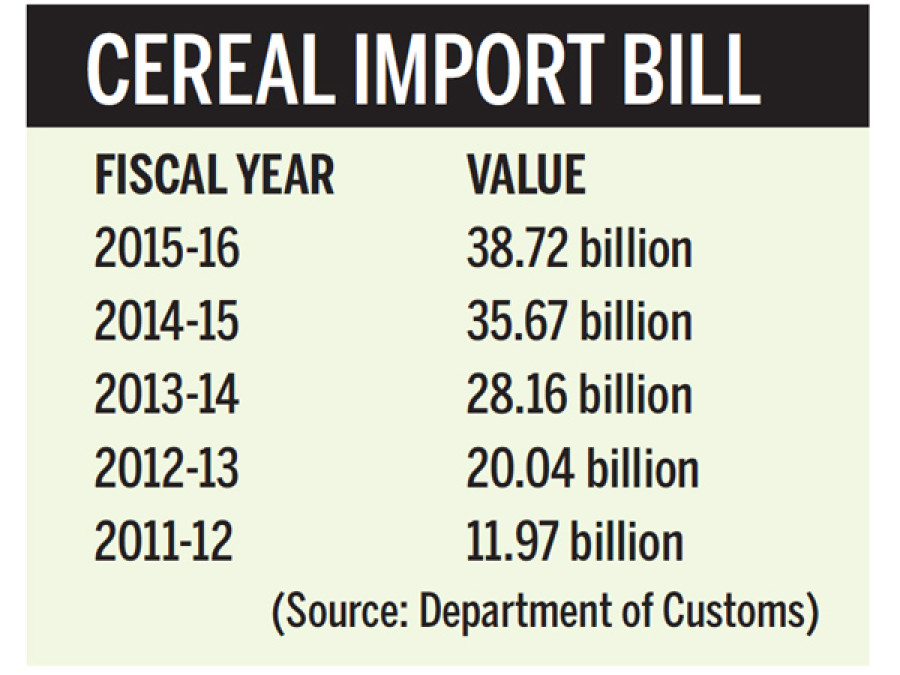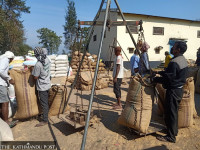Money
Farm sector expected to rebound with vengeance
Nepal’s farm sector is expected to rebound with a vengeance in 2016 after two straight years of drought, allowing the new CPN (Maoist Centre)-Nepali Congress coalition government to start off on an auspicious note.
Nepal’s farm sector is expected to rebound with a vengeance in 2016 after two straight years of drought, allowing the new CPN (Maoist Centre)-Nepali Congress coalition government to start off on an auspicious note.
The Food and Agriculture Organization of the United Nations (FAO) in its latest assessment of Nepal’s agriculture sector has forecast that the 2016 summer paddy output will recover to 4.8 million tonnes, up 13 percent from the reduced 2015 level. Maize output is also expected to grow to last year’s near-average level.
The FAO said that rains had been above-average over most of the country since mid-May which has benefitted paddy transplanting activities.
Last year, Nepal’s overall cereal crop output dropped 7 percent to 8.61 million tonnes, resulting in a sluggish economic growth of 0.77 percent. Paddy output fell sharply by 10.22 percent to 4.29 million tonnes.
The FAO said that excessive precipitation triggered localized flooding and landslides in parts of the Central and Western regions, but the impact on early planted crops is expected to be minimal.
“Assuming normal weather prevails and given reported adequate fertilizer supplies,
the FAO forecasts the 2016 paddy output to recover to 4.8 million tonnes,” it said.
The UN agency said that the 2016 maize crop was currently in the late development stages.
The FAO forecasts the 2016 maize output to remain close to last year’s near-average level. Maize production grew 4 percent to 2.23 million tonnes last year.
The production of almost all food grain has shrunk due to multiple environmental and political stresses—drought, flood, earthquake and unavailability of chemical fertilizers and diesel due to unrest in the Tarai.
IMPORTS SCENARIO
Despite the projected growth, the FAO said that cereal imports in 2016-17 were forecast to reach a record level of 962,000 tonnes.
The record imports reflect lower wheat output in 2016. The Ministry of Agricultural Development estimated that wheat output plunged 12.1 percent to a six-year low of 1.73 million tonnes in the last fiscal year.
Wheat imports are expected to almost double to 250,000 tonnes in 2016-17, according to the FAO. Similarly, rice imports are anticipated to increase slightly to 550,000 tonnes in 2016, reflecting the reduced 2015 production.
The ministry’s annual crop production report shows that the country produced 652,000 tonnes less food grain in the last fiscal year as severe drought affected both summer and winter harvests.
The drop in harvests has been reflected on imports. According to the statistics of the Customs Department, Nepal’s cereal import bill jumped to a staggering Rs38.72 billion in the last fiscal year after unfavourable weather left it with the worst cereal harvest.
Of the total imports, rice and paddy amounted to 489,401 tonnes worth Rs21.42 billion. Likewise, the country bought 357,243 tonnes of maize valued at Rs9.88 billion. Wheat imports totalled Rs5.77 billion.
According to government figures, the country’s cereal import bill jumped more than threefold over the last five years, raising fears that an agrarian country was increasingly becoming dependent on imported food.
CEREAL IMPORT BILL
2015-16 38.72 billion
2014-15 35.67 billion
2013-14 28.16 billion
2012-13 20.04 billion
2011-12 11.97 billion
(Source: Department of Customs)




 7.12°C Kathmandu
7.12°C Kathmandu












